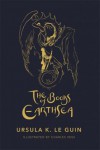Arbie's Unoriginally Titled Book Blog
It's a blog! Mainly of book reviews.
Currently reading
The Kalevala, Lonrott

Chances are that if you've heard of this work at all it's because it was the inspiration for Longfellow's Hiawatha, you've just heard about the publication of Tolkien's Story of Kullervo or you're some kind of expert in Epic Poetry. Which is to say it's fairly obscure outside it's native Finnland, where, by contrast everybody knows it because it's the National Epic, heavily influencing the development of a Finnish national consciousness.
(A brief aside on Tolkien: he used the Finnish language as inspiration for Quenya, the language of the High Elves, as can be seen, for example, in his use of "ilma" , "air" in the name Iluvatar, the creator the world, also seen in the Kalevala's magical smith, Ilmarinen who forged the sky.)
Now, I think this is a crying shame because one doesn't have to get very far (say 3 Cantos out of 50) into the Kalevala, which was constructed by Lonrott from Finnish folk songs he collected, before realising that Hiawatha is a trite, juvenile pastiche that is fairly patronising to both the Native American and Finnish cultures Longfellow stole from in order to create his most famous and hugely popular work. The parallels are obvious but reading the Kalevala will connect you to a mythic time past and a culture evolved but still alive now in a way that cutesy Hiawatha, Minnehaha and co. never can. The heroes of this epic, Vainamoinen, Ilmarinen and others have greater stature, more complex character and more visceral connection to their Scandinavian landscape and lifestyle than Longfellow's pale imitations can even imagine. They also have more interesting, exciting and just plain weird adventures - magical duels by song, I don't know how many visits to the land of the dead, the forging of magical and mysterious artifacts, quests, conflicts and more. It's great stuff.
It's also surprisingly easy to read, especially if you take it at just a Canto at a time, like I did. Being immersed in such a vivid, magical, strange world for a long time is a delight anyway. The verse (of this translation, at least) is not stuck in a nightmare of endless iambic meter that swiftly lulls one to sleep, either. Instead lines of variable length maintain a swift narrative (for the most part see below) and I found it pretty easy to read about 10-15 p (a typical Canto length) without losing focus.
The Finnish folk tradition divides up into men's and women's songs. Lonrott didn't discriminate and collected both. When he came to assemble his epic tale from all the song fragments, he incorporated elements from both traditions. The contrast is strong and remarkable; men's songs focus on adventure, magic, conflict, hunting and history. Women's songs focus on the domestic, weddings, marriage, farming, which are comparatively dull and slow. The revelation of an outrageously sexist society is unavoidable; it sucked to be a woman or girl back then.
Bards and song feature heavily in Epic but never so much, in my experience, as in the Kalevala. The most prominent hero is a bard, magic is primarily performed by song and no opportunity is missed to demonstrate how important music, song and story telling were in that mythic land of legend. And the myths presented here are great; fantastical, preposterous, adventurous and most of all tremendous fun: I shall miss hearing about the exploits of the oldest bard, Vainamoinen, forger of the mysterious Sampo, Ilmarinen, and their cohorts and enemies, such as Louhi, hag of the North who stole the sun and the moon.
 3
3










